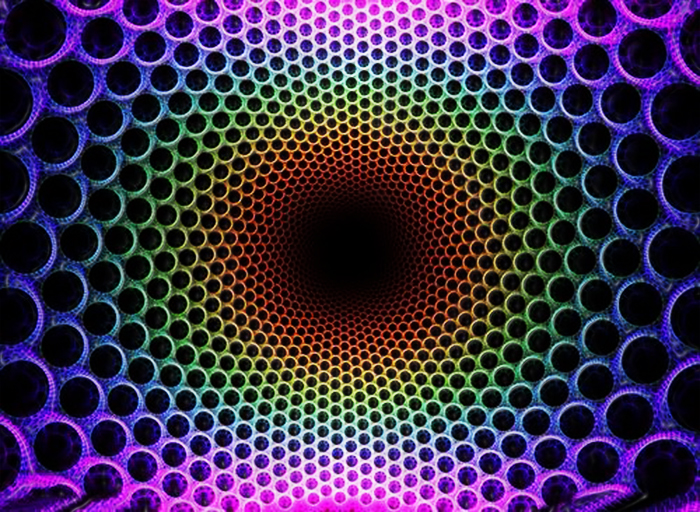Why Do We See Illusions?

Vision scientist Mark Changizi disassembles the aura of optical illusions in this brief talk for TedEd. Why do we see illusions? Aren’t our eyes and brains complex enough to avoid being fooled by simple visual tomfoolery?
The answer lies in the communication protocols linking our optical and brain arrays. The architecture of our central nervous system is such that a gap of 1/10th of a second exists between the moment light first hits our photoreceptors and when that signal is processed by the brain. Our brain compensates for this delay by projecting images 1/10th of a second into the future.
These premonitions aid us in catching a thrown ball, for example, but trick our senses when viewing certain static imagery on a 2D surface. The result of this neural lag is that we can mistake inert images for motion often intuiting motion-like characteristics (as in the image above). The illusion that is the focus of this talk is called Hering’s geometrical illusion of curvature.
Changizi displays some interesting optical illusions to drive home this latency in communication feedback. Much of this and more is described in greater detail in his fascinating book, The Vision Revolution. You can find my review here.
External link: Why do we see illusions? – Mark Changizi
Feature image courtesy of comicsandmemes.com


Comments